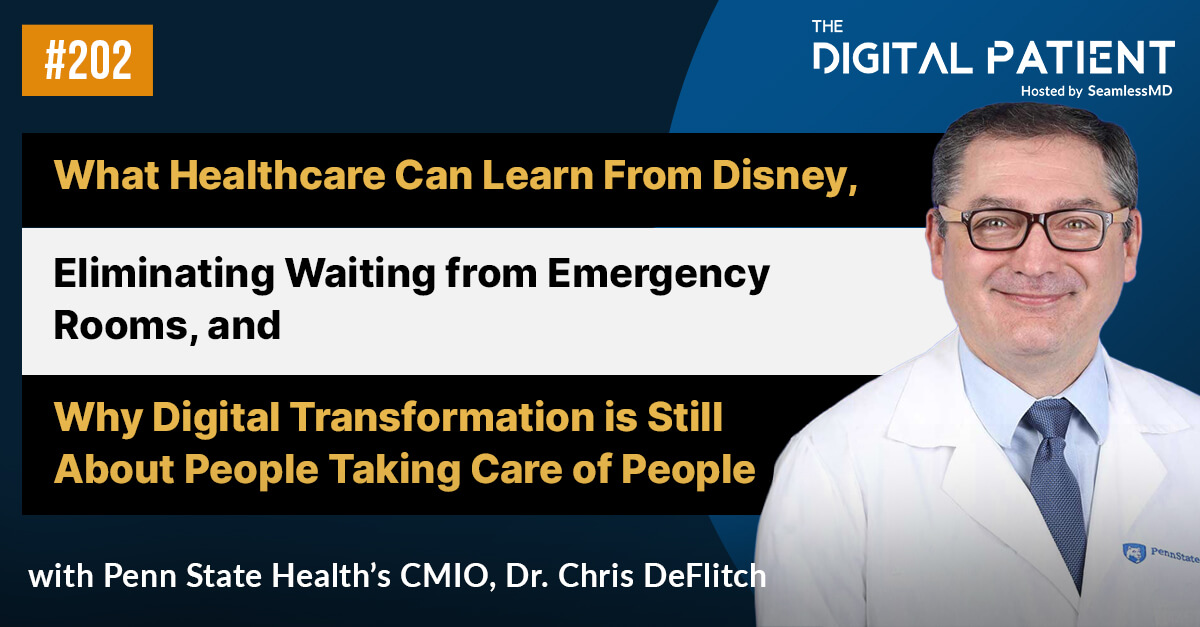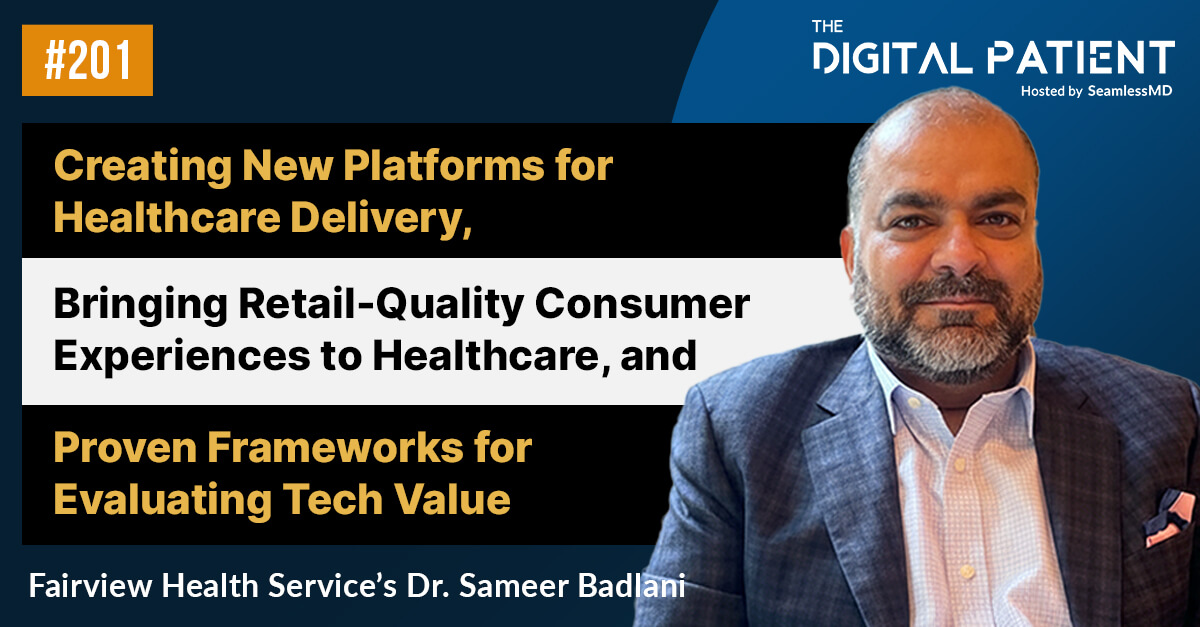On a recent webinar hosted by Digital Health Canada, Caroline Fanti, Director of Surgical Services for Thunder Bay Regional Health Sciences Centre (TBRHSC) shared insights on how her hospital has leveraged deviceless Remote Patient Monitoring (RPM) to transform surgical care across Northwestern Ontario.
Deviceless RPM, or digital care journeys, involves leveraging a patient’s own smartphone, tablet or computer to send patients reminders, deliver education and remotely monitor symptoms - such as for pre and post-surgery, oncology, women’s health and chronic care. The idea is to enable a more scalable technology approach to a larger variety and volume of patients than a more resource-intensive device-based RPM program that requires every patient to be sent a kit with medical devices.

Since 2020, TBRHSC has been using deviceless RPM to care for patients across a large area the size of France, growing to 14 clinical areas: Shoulder, Total Hip and Knee, Spine (Lumbar and Cervical), Cardiac Catheterization, Bariatrics, Colorectal, Urology, Gynecology, Breast Cancer, Maternity Care and Oncology.
Why? As Ms. Fanti explains: “Our other hospital partner sites are 3.5 to 6 hours away. So the patients we’re caring for, they really need a safety net under them because they are far away from their surgical care team.”
You can watch the full webinar here. Below are 7 lessons that Caroline shared.
1. Vast majority of patient issues or concerns can be handled automatically with technology - allowing clinicians to monitor far more patients
Unlike with device-based RPM solutions that require significant clinician monitoring, TBRHSC’s deviceless RPM approach allows the technology to handle 85% of patient self issues through automated self-management.
As Ms. Fanti explains: “In our first 3,000 patients that we provided care to, 85% of patients only required the self management that they received directly from the app. 14% needed a call from our nurse practitioner team. 1% (or 30 out of 3,000) were instructed that they needed to go to the emergency department based on how they answered their health survey showing us some red flags.”
This approach has allowed TBRHSC to support thousands of patients across four hospital sites with just 2 FTEs on the nurse practitioner remote monitoring team.
2. Deviceless RPM can drive higher throughput and improved outcomes hospital-wide
Ms. Fanti shared three different outcomes analyses performed by TBRHSC to measure the impact of their device RPM program:
The first looked at hospital-wide outcomes across 14 clinical areas supported by the RPM program: “We demonstrated that we were able to drop length of stay by 1.19 days or 48% and simultaneously reduce ED visits by 31.7%.” A copy of this case study can be found here.

The second analyzed hip and knee replacement surgery in more detail, segmented by all four hospital sites. Across all four hospital sites, the results still showed a consistent reduction in ED visits ranging from 63% to 81% - while increasing surgical throughput by 12% across the board:

The third analysis drilled down further into a more rigorous, matched cohort analysis for hip and knee replacement - to determine that even when comparing apples-to-apples among patients with similar demographics, the RPM initiative was clearly having a significant impact: “Once we controlled for all of those variables, we were still able to consistently demonstrate that there was a 50% reduction in return visits to the ED and 58% reduction in readmissions.

3. Start with high volume, high acuity use cases - then use those results to motivate the organization to scale
When starting their RPM initiative, TBRHSC strategically chose to start with hip and knee replacement surgery because it was a high volume, high acuity use case that enabled them to build data with a strong ROI quickly. Joint replacement also has an older population, which allowed the organization to demonstrate the technology could properly support the older, sicker population in Northwestern Ontario.
“Another one of the questions that ties into this is, you know, how do we, how do we generate our ED avoidance data? What I did was I ran the data prior to implementation for those cohorts, obviously made sure that the number of patients that we're measuring are equitable in both groups. And so I did 2018 to 2019. You know, how many hips and knees did we do? How many patients went back to the ED? What was their length of stay? And then I've continued to measure that every year after every fiscal year after since we've implemented the remote patient monitoring app with SeamlessMD.”
4. Sustain success by measuring outcomes and ROI annually
While some organizations only do an initial ROI evaluation of their Digital Health initiatives, Ms. Fanti’s team has been diligent in measuring outcomes annually despite strong initial success - with a drive for continuous improvement.
5. Successful programs can pull-in physician engagement instead of it needing to be a push
Success begets success. When asked about barriers to getting physician adoption for their RPM initiative, Ms. Fanti shared that TBRHSC’s success has led to the opposite experience: “Instead of us chasing down the surgeons saying, do you want to participate? It's actually the surgeons chasing us down saying, how do we get in on this? We want to be a part of it. That's how good it is”
6. Deviceless RPM has saved patient lives
TBRHSC has helped patients with deadly post-discharge complications get help sooner, such as patients who developed blood clots or a heart attack after surgery.
In one powerful story about a patient whose heart attack was caught early thanks to the RPM program, Ms. Fanti shared: “our team followed up with her and said, ‘Without the app, would you have gone to the emerge?’ And she said ‘No’”
7. Deviceless RPM drives word-of-mouth about a world class patient experience
Ms. Fanti shared two examples of how patients raved about the experience provided by TBRHSC’s RPM program.
In the first, she shared how one of their surgeons was in a local restaurant and overheard patients raving about the RPM program.
In the second, they’ve heard from patients (who are nurses themselves) who experienced a surgery with and without the RPM program, and the RPM support was clearly superior: “We've had nurses that have gone to the fracture clinic for their follow up care for their second joint, their other knee, their other hip, and they've said to our team: ‘This was a game changer. I'm a nurse. I had my first knee done without this support, and I can't tell you enough how much better my experience was the second time around because of this program.’”
.svg)










.png)
